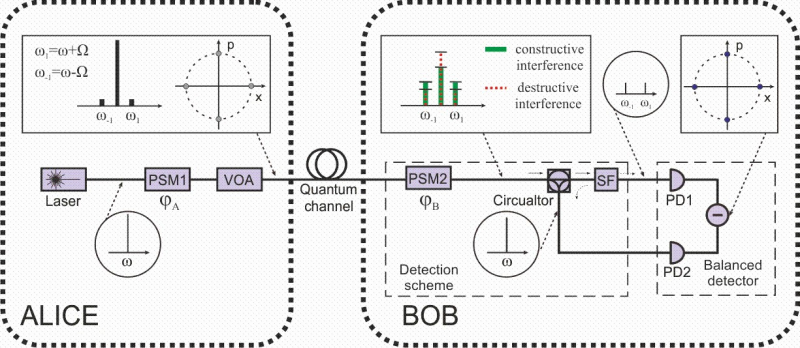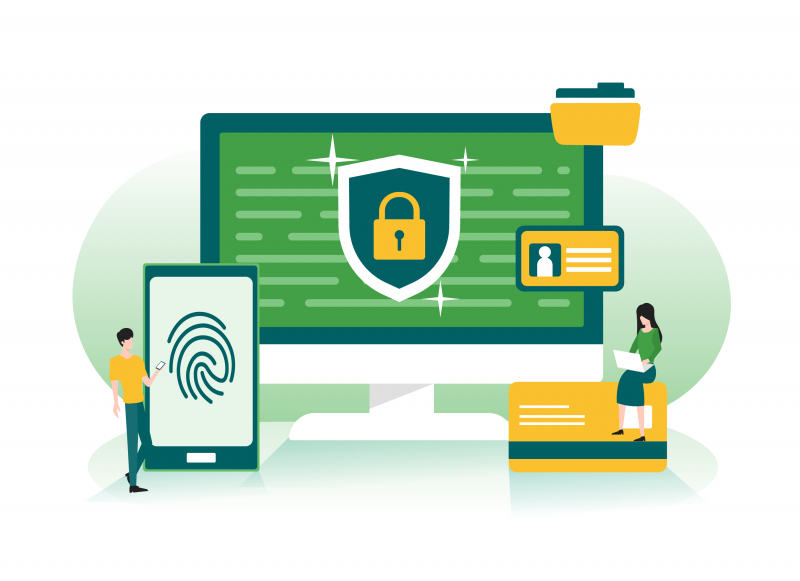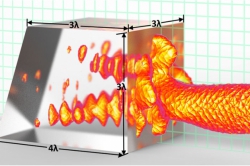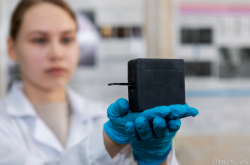Many have heard about quantum key distribution (QKD), which is also sometimes referred to as quantum encryption. Today, this is one of the safest ways to encode information that can then be used by major banks, military and governmental organizations. In a QDK system, the information is transmitted by quantum radiation, which is extremely hard for eavesdroppers to intercept.
“As a rule, QKD uses a weak laser light with an average number of photons less than unity,” explains Eduard Samsonov, a research associate at ITMO’s Faculty of Photonics and Optical Information. “This light has fundamental special features, the so-called quantum effects that leave no chance for a third party to infiltrate the channel to read the information without being noticed.”
The demand for QKD systems is constantly growing. There is, however, one hindrance to their mass production – it requires highly complex and expensive equipment. Moreover, these systems can hardly be used in the already existent fiber-optic infrastructure. Recently, ITMO University researchers have published an article where they suggest a way to solve these problems.

“Our research facilitates a more active introduction of QKD systems,” says Eduard Samsonov. “The existing fiber-optic networks use a certain infrastructure and we would like to embed QKD systems in this infrastructure with minimum effort. For instance, for quite some time there has been an idea to use coherent detectors that are actively applied in modern optical connection cables. This would allow us to do away with cumbersome, expensive and hard to maintain single photon detectors. Instead, we could simply install a small box that would also extract information from a quantum signal. All of this will decrease the price of QKD systems and make them easier to use. Moreover, the small size of detectors makes it possible to use them in miniature robotic devices, which means this technology can be actively employed in the IoT systems.”
ITMO University researchers have developed a QKD system with coherent detection based on subcarrier wave quantum key distribution protocol.
How it works

“Our system uses an electro-optical phase modulator,” expounds Eduard. “That is, if the radiation occurs at a certain optical frequency, phase modulation results in subcarrier frequencies being formed, which contain certain information about the signal transmitted. If the modulation index is low, light radiation at these subcarrier frequencies will be weak.”
The main breakthrough of the researchers is a unique method of coherent reception for exactly this kind of system. At the base of the method is the use of a carrier optical frequency that doesn’t transmit any information by itself but can be used as a support to register the weak signal phase from subcarrier frequencies.
“We had a carrier frequency that travels with subcarrier frequencies and is cut out at the receiving end,” comments Eduard. “In the scheme we suggest, we use this carrier frequency as a support for coherent detection. For that, we increase the modulation index, which means that radiation from the central frequency is redistributed and interferes with each mode separately. Thus, with constructive interference the greater part of radiation will be at the subcarrier frequencies – and vice versa, with destructive interference the greater part will be at the central frequency, which can be registered by a balanced detector.”
Effectively, the researchers suggest installing another modulator like the one creating the initial signal at subcarrier frequencies but with an increased modulation index, and then bringing the signal through it again. This way, additional subcarrier frequencies are created one more time and interact with those coming from the transmitter.

At the same time, the system maintains all the safety and security of QKD. Just like in the systems currently in operation, the phase of the signal cannot be measured precisely. There will always be an error – and the number of errors will grow if an eavesdropper attempts to copy and resend the signal.
“Owing to the uncertainty principle, there will always be an error when we try to determine the phase, we can evaluate this error and then if it is over a certain set limit, we will know there is an eavesdropper in the channel,” clarifies Eduard.
The researchers have created a mathematical model of the suggested scheme, which correlates well with experimental data. They have also proposed an analysis of the developed protocol’s resilience to collective attacks.
Reference: E. Samsonov, R. Goncharov, A. Gaidash, A. Kozubov, V. Egorov & A. Gleim. Subcarrier wave continuous variable quantum key distribution with discrete modulation: mathematical model and finite-key analysis. Scientific Reports, 2020/10.1038/s41598-020-66948-0





